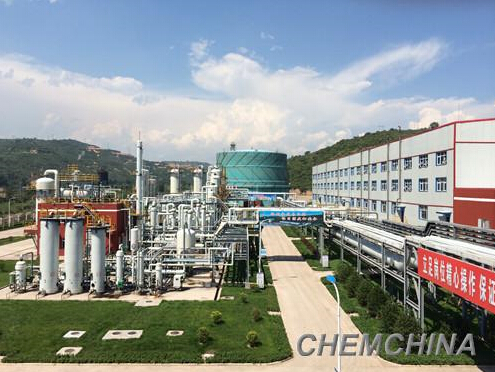
A 240-million-cubic-meter-per-year coke-oven gas-to-synthetic natural gas unit went into operation at the Shanxi Guoxin Energy Development Group recently, connected to a gas network, with the technology and catalyst coming from the Chemical Industry Southwest Research and Design Institute. The gas it produced met GB17820-2012 standards and the unit is China’s only model of its kind to cut carbon dioxide emissions by 200,000 tons annually and produce 100-million-cubic-meters of synthetic natural gas. This means a new approach to clean energy production using waste gas from heavy industries and helping the technical development and clean production of the coking industry.
The project is also an important part of Shanxi province’s gasification strategy, costing 300 million yuan, according to Tang Yaozu, the chairman of Shanxi Guoxin. It uses the Southwest Institute’s coke-oven-gas purification and methanation technology to remove benzene, naphthalene and sulfide from coke-oven gas. The purified gas then gets turned into methane via catalysts and residual hydrogen is separated, producing synthetic natural gas with methane concentration of more than 88 percent, with zero pollutants. The unit went into operation on July 10, 2014 and the gas product meets national standards. This project will cut coke-oven gas emission by 240 million cubic meters per year, carbon dioxide by 200,000 tons, sulfur dioxide, 120 tons, and dust, 10 tons and will produce 100 million cubic meters of natural gas annually, saving 1.45 million tons of coal, and bringing 250 million yuan in revenues and 60 million yuan in profits.
The Institute has developed coke-oven-gas-to-natural gas technology and catalysts and has handled lab research, pilot tests and software package development and applied for 10 invention patents with six approved. The synthetic natural gas project passed a Sichuan provincial science and technology dept study in May 2010, which found that it went beyond similar China and foreign models in many ways, saving a significant amount of energy and cutting emissions. China is a major coking chemical country and the coke-oven-gas-to-natural gas technology will be able to reuse 20 billion cu m of coke-oven gas and produce approximately 8.5 billion cubic meters of natural gas annually. The technology has an important part in the country’s alternative energy strategy and the Institute has signed related agreements with several companies, such as the Shanxi Xiangkuang Group, and has transferred the coke-oven-gas-to-natural gas technology to more than 20 companies, while providing feasibility reports to more than 30 companies. Experts have said that the project can help with clean production in the coking industry and increase the value of coke-oven gas and coal tar products. The project could play an important role in transforming traditional coking and popularizing coke-oven-gas development and utilization.